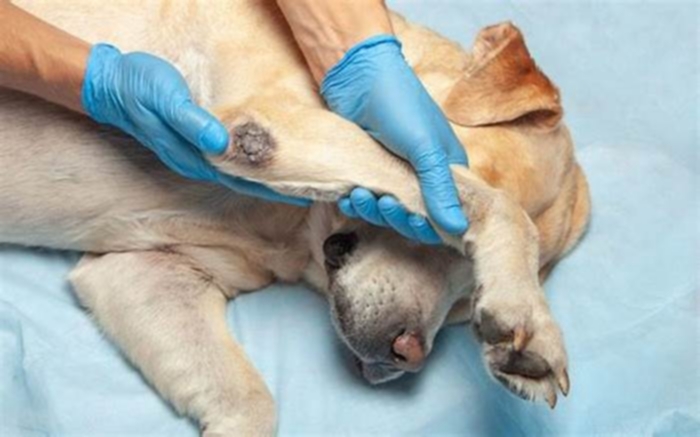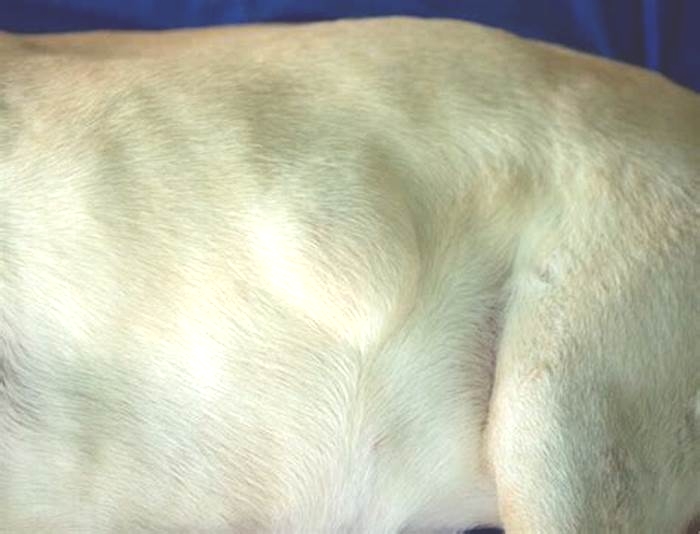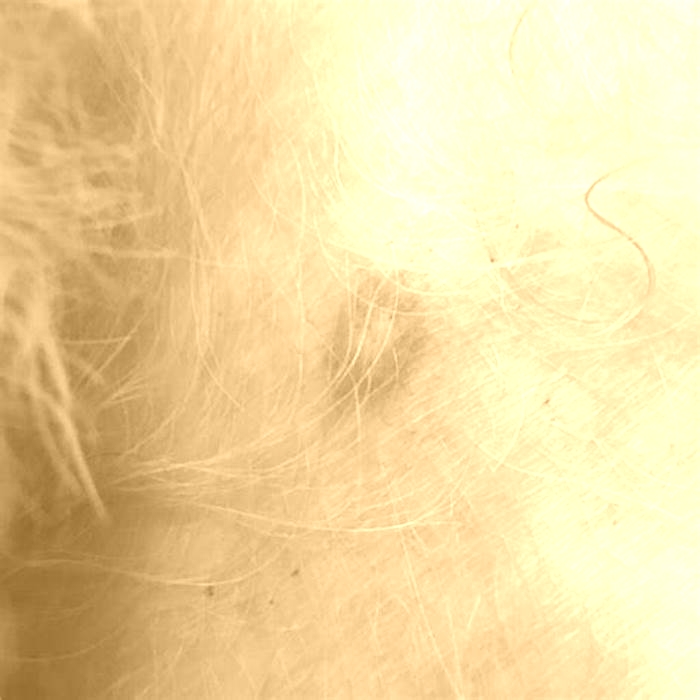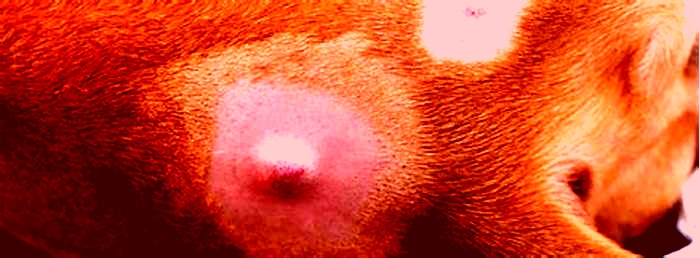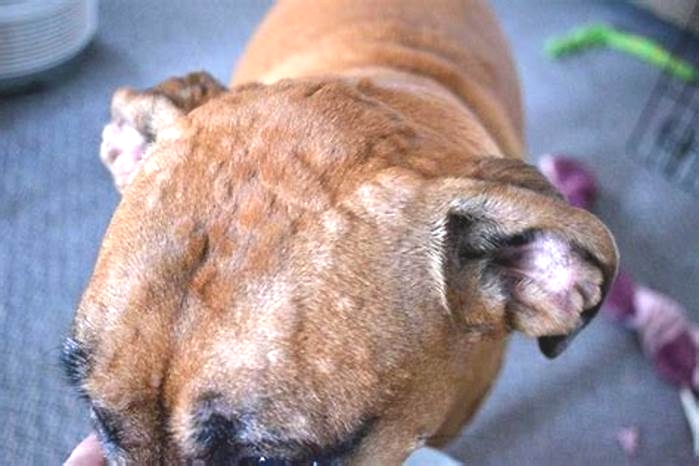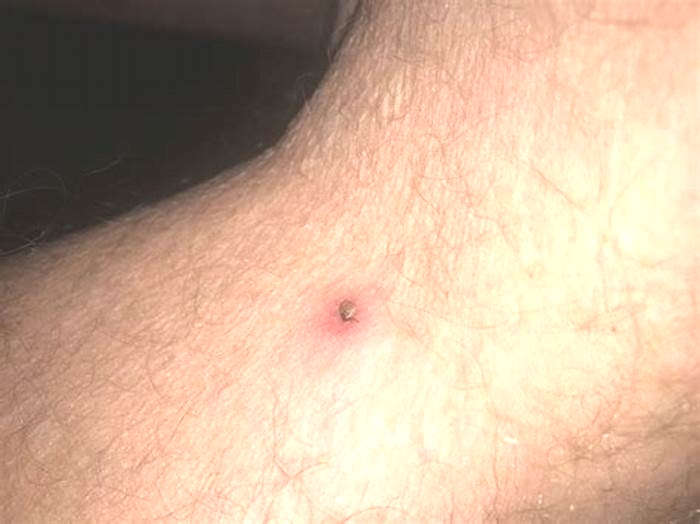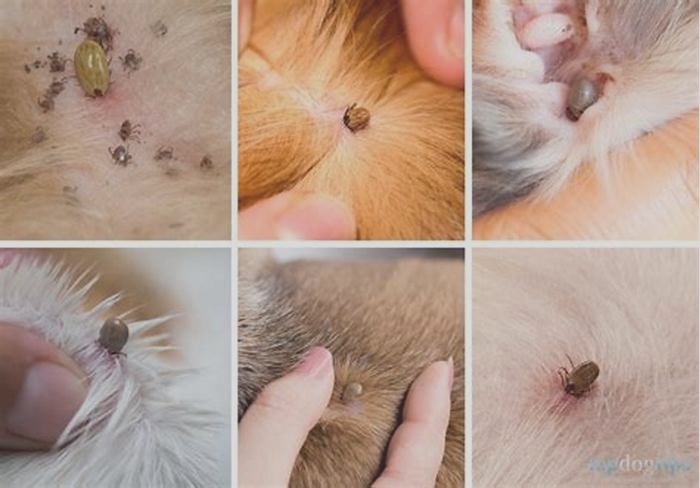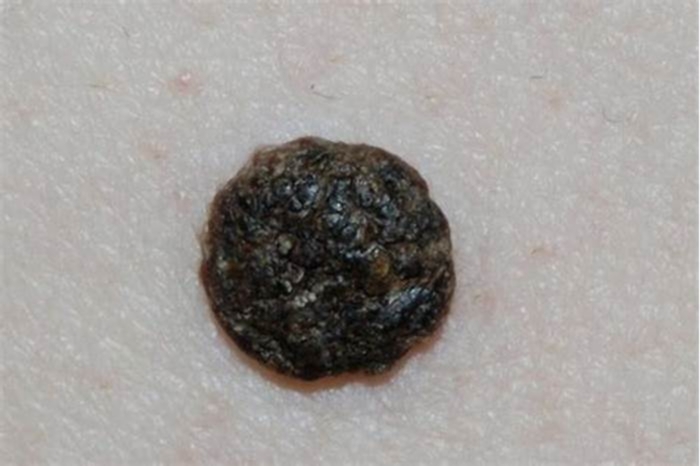Should I be worried about a bump on my dogs belly
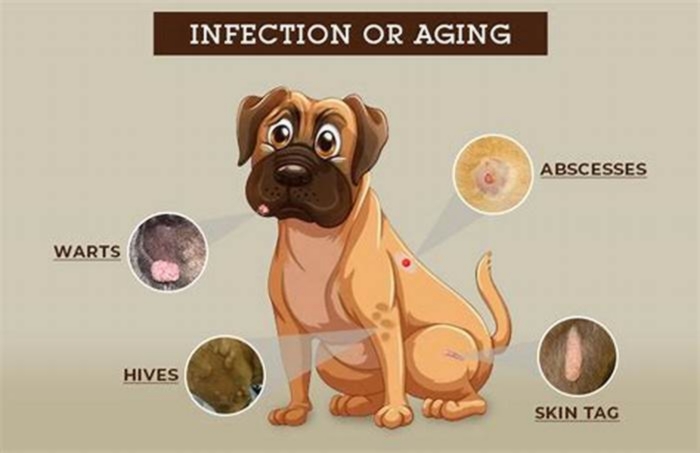
Suspicious Lump on Your Dog? Heres When to Tell the Vet.
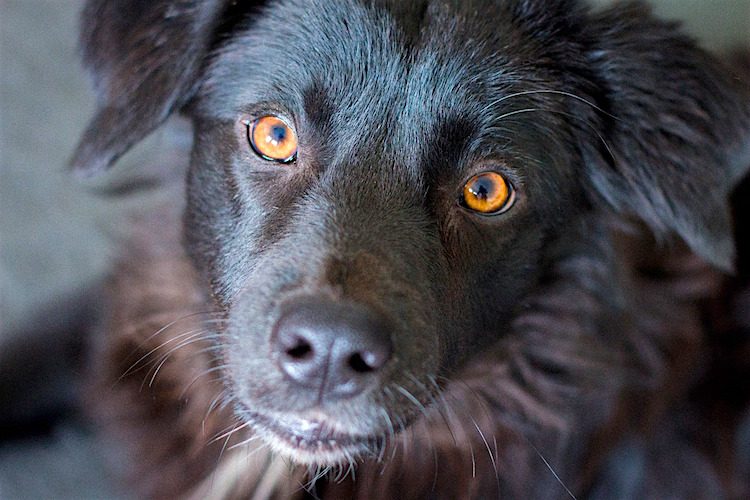
Two dogs were booked yesterday with the same problem, one after the other.
The reason given in the chart? Client concerned as a lump has got bigger.
But whereas one dog needed no further action, the other dog faces referral to a specialist. Why? Because one lump was a harmless fatty bump, but the other was a potentially serious tumor.
What these dogs had in common were concerned humans. They had both done the right action in bringing their pet to the veterinarian to investigate suspicious lumps on the dogs.
Found a Suspicious Lump on Your Dog
Most people find a suspicious lump on their dog and immediately think ofcancer.
Are all lumps cancer? No!
A lump is a swelling or area of tissue thickening. There are many reasons a dog can get a suspicious lump. For example:
- A cyst: This is a lump filled with fluid that is secreted from the lining of the cyst.
- An abscess: This is a discrete collection of pus, usually the result of a bite or scratch.
- Bruising and thickening: This is a result of a knock or blow.
- Ticks or foreign bodies: A colleague of mine once diagnosed a tumor as a boiled sweet stuck in the dogs fur.
But what if the suspicious lump on your actually is cancer?
Not all lumps are the same.
Theres a spectrum of seriousness that ranges from nothing to worry about to potentially life-threatening. But while its the latter that sticks in the mind, the former are more common.
Cancers are also divided into:
- Benign:The lump grows bigger but wont spread to other parts of the body.
- Malignant: These aggressive lumps have the potential to spread to the organs.

When to Worry About a Suspicious Lump on Your Dog
Get any new lump or any existing lump that changes in some way checked out.
There are certain signs that can tell you that an urgent visit to the vet is for the best.
These include:
- Rapid growth: A suspicious lump on your dog thats growing quickly can cause problems in 2 ways. First, this may be a hint its more aggressive, and second, a large lump is more tricky to remove than a small one.
- Redness: Some more serious lumps on dogs release chemicals that cause tissue reaction and inflammation. If the bump looks sore or bothers the dog, then get it checked out as a matter of urgency.
- An ailing pet: Again, some tumors release chemical factors that affect general health. If the dog lacks energy, is losing weight, has tummy troubles or is drinking a lot, then let the vet know.
Common Questions About Suspicious Lumps on Dogs
What ifI can lift the lump up in the skin, away from the tissues underneath?
This is a good sign, since aggressive lumps often invade the deeper tissues.
But and its a big but some more serious lumps on dogs, such as mast cell tumors, can mimic less harmful ones, so even this sign is no guarantee.
The dog has had the lump for years, and its never changed. Should I worry?
Again, no change is generally considered a good sign because aggressive cancers are just that and will grow quickly.
However, check those lumps and bumps monthly.
- Take a photo, if necessary, so you have a record.
- Better still, photograph the lump next to a ruler so you know the exact size.
If the lump starts to grow, becomes red or changes character, then it is a suspicious lump on your dog and off to the vet it is.

Why You Should Listen to Your Vet About Pathology
I found a lump, and Im in a panic.
I hear this all the time. I also hear a follow-up comment at times that makes me unhappy: Just take it off, and I dont want to know what it is, says the worried client. Oh, boy. Now Ive got some convincing to do.
Most growths that warrant removal also warrant analysis. This analysis is called a biopsy or pathology.
Its important to get a diagnosis on a growth, to give it a name so that we know what we are dealing with, but many people balk at this idea. For the purposes of this article, assume that lump, bump, growth, mass and tumor are interchangeable terms.
What Clients Sometimes Say
If its bad news, Id rather not know.
I hear this a lot when someone declines to send out a biopsy. Well, what if its good news?
- Many growths or tumors can be cured when surgical removal is complete.
- Did you know we use the term tumor even when describing a benign growth, such as a fatty tumor, commonly called a lipoma? Tumor means an abnormal growth of tissue. It is not synonymous with cancer. There can be benign tumors and malignant tumors.
- Some growths might look nasty and have you and your vet concerned, but the diagnosis may paint a more favorable picture.
- If you dont get a diagnosis, you live with worry and concern. An answer stops the What if? syndrome.
If its cancer, I wont put my pet through chemo.
There is so much wrong with this kind of thinking. First of all, recommending chemotherapy following a growth removal is not all that common.
If and thats a big if some sort of drug therapy is recommended following surgery, we usually choose chemo drugs that have low toxicity and are tolerated well. If the drug doesnt agree with the pet, we can always stop the drug, usually without doing lasting harm.
If a biopsy does yield bad news, many people in the I wouldnt do anything drastic camp change their tune when follow-up treatment could mean a longer life or cure for their pet.
No biopsy for my pet its too expensive.
Lab fees can be costly, pathology fees costing upward of $200.
The information obtained, however, can tailor a follow-up treatment plan. Knowing the type and behavior of the tumor your pet had removed helps us make decisions in the future.

Cytology, Biopsy, Pathology
There are a number of ways to get information about a growth, both before and after removal.
Fine Needle Aspirate (FNA)
Basically, a fine needle aspirate is a fancy way of saying we stick a needle in a lump, squirt the contents of the needle on a slide, stain the slide and look at the splat!
Looking at cells like this is called cytology. Hopefully, the splat (aspirate) contains cells that give us a clue about the type of growth were dealing with.
FNAs are quick, easy and inexpensive, but they yield limited information. Many FNAs give us an idea that a growth is probably benign or probably cancerous but tell us little about how that growth will behave or the severity of the cancer.
Biopsy
A biopsy usually refers to a sampling of a growth taken prior to removal of the entire growth and having it analyzed by a veterinary pathologist.
Many biopsies can be done with only a local anesthetic. In an ideal world, it would be great to biopsy every growth and know the diagnosis prior to surgical removal.
The pros of doing a biopsy are many. The biopsy can suggest how much of a pre-surgical work-up should be done and tell the surgeon how conservative or radical to be at the time of surgery.
Certain tumors, for example, due to their aggressive behavior, require a very wide excision to get the best chance at a cure. Having a reliable biopsy in advance prepares the client, surgeon and patient for a basic or more radical surgery.
The cons generally have to do with putting the animal through an additional procedure, the cost and the possibility that the small section of tissue submitted for biopsy may not be representative of the entire mass.
Rarely, excessive bleeding can occur.
Histopathology
Histopathology refers to the preparation and microscopic examination of tissue samples.
Usually, we use the phrase sending out for pathology when we remove an entire mass and send that mass with surgical margins to the pathologist. The tissue (growth, mass, tumor, etc.) is the biopsy sample, and histopathology is the analysis.
Sending an entire mass to the lab for pathology gives us the best diagnosis and tells us if our margins are clear of tumor cells. The pathologist will also comment on the specific character of the cells in the mass, stage the tumor if applicable and often give an opinion about prognosis.
Sending Out the Biopsy
When clients understands the important medical information and prognostic factors that can be learned from pathology, they frequently agree to the added expense.
Occasionally, a client declines the biopsy, even when I strongly recommend it be done. I tell these people on the emotional or financial fence that their pets tumor is fixed in formalin. The sample is not time-sensitive and can go out to the lab next week or next month.
The bottom line: When your vet recommends the pathology, please do it.
The Most Common Lumps and Bumps on Dogs
This isnt meant as an exhaustive list but as an idea of the types of lumps that are most common in dogs.
- Warts: The extra skin tags or lumps of skin are usually harmless but may bleed if caught by a brush or collar.
- Fatty lumps, or lipomas: These are localized fat deposits that are common in older dogs. Again, they are of no significance other than if they grow so large they become a nuisance.
- Mammary cancer: This is more common in older female dogs who are not spayed.
- Mast cell tumors: These can range from those lumps where removing them solves the problem to potentially aggressive lumps that can spread. Theyre common in younger dogs, and surgical removal is the best option.
- Sebaceous cysts: Common in older animals, some cysts are filled with a white, almost toothpaste-like secretion. They are of no concern other than being a nuisance.
- Histiocytomas: Another skin tumor that occurs in young dogs, these ones do eventually subside of their own accord. However, the problem is mast cell tumors can mimic histiocytomas, so removal is the safest option.
These vets provide great information and advice for those who have found suspicious lumps on their dogs:
Final Thoughts on Suspicious Lumps on Dogs
Check your dog regularly for lumps and bumps.
If you find a new lump or an old lump is growing, get them checked by a veterinarian.
Should the lump be something worrisome, early intervention gives the best chances of a good outcome. So dont go into denial, but keep calm, carry on and get your pet checked by a vet.
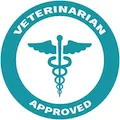
This pet health content was written by a veterinarian,
Dr. Pippa Elliott, BVMS, MRCVS, with contributions from another veterinarian,
Dr. Debora Lichtenberg, VMD. It was last reviewed Aug. 14, 2019.
If you have questions or concerns, call your vet, who is best equipped to ensure the health and well-being of your pet. This article is for informational purposes only and is not a substitute for professional medical advice, diagnosis or treatment. See
additional information.
Lumps On Dogs. How To Know When To Worry And What To Expect At The Vet
When you pay enough attention to your dog, as we know many dog parents do, there are times when youll find that something is out of place. Either theyre limping in a way that you dont know what caused it, or maybe they arent as interested in their toys the way they used to be. Changes like those arent always something that causes instant concern, but when you notice a lump or bump on your dogs body that wasnt there before, panic may come soon after.
While keeping your pet healthy and safe does sometimes require that knee-jerk reaction of fear, a lump or bump on your dogs skin doesnt always require a trip to an emergency vet. Below, weve broken down some of the different types of lumps that can be found on dogs. Of course, the only one who can tell you that for sure whether a mysterious bump is a cause for worry will be your vet, so be sure to schedule the next appointment available so your furry friend can get checked out.
What is a lump on your dog? How to identify something that shouldnt be there
For many pet owners, their dog is one of their best friends, if not the best. They spend a lot of quality time with their pet and possibly even their personal space. But even if you are spending every waking minute with your dog, theres a chance that something new may develop that you dont notice right away.
Lumps and bumps on your dog can easily be something you dont notice for a while. Either they are small enough that you dont feel it as it develops, or its in a spot on their body that you dont often come into contact with, like the inside of their leg for example.
Finding the lump is the first step. The second will be to not panic, not all bumps on a dog mean that they have cancer. That being said, your next step is to get an appointment with your vet to get the lump checked out and confirm whether its something that needs to be worried about or not.
Its also often recommended that you measure the bump; knowing where it started with an objective number makes it easier to keep track of the progress of the bump. There are times when our memories and eyes can deceive us into thinking that the bump is getting larger or smaller, and having a measurement will make it easier to know what changes haveor have notbeen happening.
Common types of lumps on dogs
Lipomas or fatty tumors
Lipomas are commonly thought of as a part of the aging process for dogs. They are benign tumors that are just a mass of fat cells under normal skin. These are usually soft, round, and movable. They are commonly found around the ribsthough they can show up in other places on the body as wellon middle-aged to senior dogs who lean toward being overweight.
Lipomas are often not something that you need to worry about on your dog. They are slow-growing and shouldnt cause your dog any discomfort. Your vet will ask you to monitor the growth and if it affects your dogs day-to-day life. If it grows quickly, or to a point your dog starts to have to work around it, it can be removed. Or it can be removed when its diagnosed, as well.1-9
Sebaceous cysts
The easiest way to describe this is that its like a pimple on your dog. A sebaceous cyst is a blocked oil gland on your dog. They can be small or grow significantly larger than youd expect a pimple to.
Do not try to pop a cyst on your dog. More often than not a sebaceous cyst will go away on its own either by shrinking away or popping in its own time and releasing a white, pasty substance. If you attempt to pop a cyst on your own there is a higher chance for it to become irritated or infected, and it can become a significantly higher threat to your dogs health in the long run. Its best to monitor a sebaceous cyst, and if it grows rapidly without popping check in with your vet. But do not try to pop it on your own.1-7,9
Abscesses
An abscess is swelling caused by puss building up under the skin. This can be caused by anything from an infection to an insect bite. Abscesses can develop quickly and become painful to your dog if not cared for quickly.
They will always require treatment by a vet to drain the puss safely and prescribe antibiotics to make sure that it doesnt return or spread infection in their body. While they do require a trip to the vet, they are not typically something that should cause great worry. Most often, they are taken care of and forgotten about once the antibiotics have run their course.2-9
Hematomas
A hematoma is a raised bruise on the surface of your dogs skin. It can be painful when touched for your dog and comes from a direct trauma to that part of their body. While a hematoma isnt necessarily something youd need to worry about for your dogs health, there is a chance that it is signifying more damage underneath that part of their skin, and should be checked out by a vet to make sure that there arent any hidden injuries, like a broken bone, beneath the bump.3,4
Warts
Warts are small bumps on a dogs skin that have a texture similar to that of cauliflower. They can be caused by many different factors, anything from viral infections, vaccination locations, and even just aging.
For most younger dogs, their body is developing their immune system and it will be able to heal the wart by itself. However, for older dogs, they may need to be removed by your vet. Either way, if you notice that your dog has developed a wart, it wouldnt hurt to give your vet a call to see what they think should be done or how to efficiently track its progression.2,4,5,6
Papules
Papules are small bumps that develop, usually around a hair follicle, due to an allergic reaction or are the result of a minor infection. Typically, they will go away on their own after the allergen is removed. However, if you arent sure that the bumps are papules, take your dog to the vet to get them checked out; they may also provide an allergy test to help identify what allergen caused the bumps to show up.4
Histiocytoma or Button Tumors
These are red, bubble shaped, non-cancerous tumors that appear on young dogs and puppies any time between ages 8-weeks to 3-years old. They are a buildup of excess immune cells that press into the skin. Normally button tumors are able to go away on their own, but if your pup starts to get irritated by it or bite and scratch it, it may be better to discuss a surgical removal with your vet.5,7,8,9
Mast cell tumors (cancerous lumps)
Mast cell tumors are the most common form of skin cancer in dogs. They can have many different looks depending on where, how, and when they develop on your dog. They can be both over the dogs skinwhere you would be able to see it past their furor under, hidden by their fur. They usually feel solid and firm to the touch and can be irregularly shaped, rather than the expected rounded bump.
Because mast cell tumors are a skin cancer, they need professional treatment. Your vet will likely recommend a surgical removal of the affected tissue as well as a small border layer around it to make sure that all of the cancerous cells are removed. When caught early, this process is very effective and your pup will be back on the move in no time.1-9
Enlarged lymph nodes
Lymph nodes can be found in many different areas of your dogs body. Swelling in lymph nodes can be an initial indicator that there may be an infection or something that your dogs immune system is fighting off.
Enlarged lymph nodes can be a sign of many different health troubles in your dog, so like all of the other lumps and bumps you may find on your dog its important to have it checked out by your vet.
Common places to find an enlarged lymph node include lumps on your dogs neck under their jaw or a lump in their armpit.
Enlarged lymph nodes can mean anything from your dog fighting a small infection to canine lymphoma developing in that area. In either case, noticing that there is a lymph node that is swelling, getting them to the vet as soon as possible to have tests run will greatly improve their chances for easy treatment.
What to expect your vet to do in response to the lump
When you take your dog to a vet to check out a lump that youve just found, if it isnt one of the more unique and identifiable bumps, like a wart for example, they will use different tests to identify what is causing the bump and how much you need to worry about it.
One of those tests will most often be a Fine Needle Aspiration (FNA). This is when your vet will take a small, unintrusive needle and stick the bump to get a sample of cells. Theyll look at the sample of cells under a microscope and use the information that they find there to identify if there are any cancerous properties in the lump and if not, what kind of lump it may be. A majority of lumps on dogs are diagnosed with an FNA.9
If the FNA is unable to identify what is causing the lump, your vet may sedate your dog to take a biopsy of the lump. A biopsy will require a part of the lump, or all of it if its small, to be removed and examined closely by a laboratory.8,9
If the lump has fluid inside, whether the fluid is the main cause of the lump or not, then an FNA cannot be done. In these instances, the fluid itself is extracted and sent to a lab for closer inspection on a molecular level to determine what that fluid is.8,9
Once your vet has the results of any of these common tests, they will come up with the best plan of action. For some cases, the plan will just be to keep an eye on the size and note if it starts getting smaller or larger; if the latter occurs then typically a secondary visit to the vet is necessary. For more serious cases they may recommend antibiotics or surgical removal.
While lumps dont always have to cause panic, its always better to be safe than sorry. Even if you feel confident that your dogs bump is the kind that will go away on its own, it doesnt hurt to give your vet a call. Many vet clinics also list an associate email address, and pet owners are encouraged to use this email address to ask questions and send in photos of their pet's issue. If a lump is something to be concerned about, the clinic will then let you know to schedule a physical appointment.

